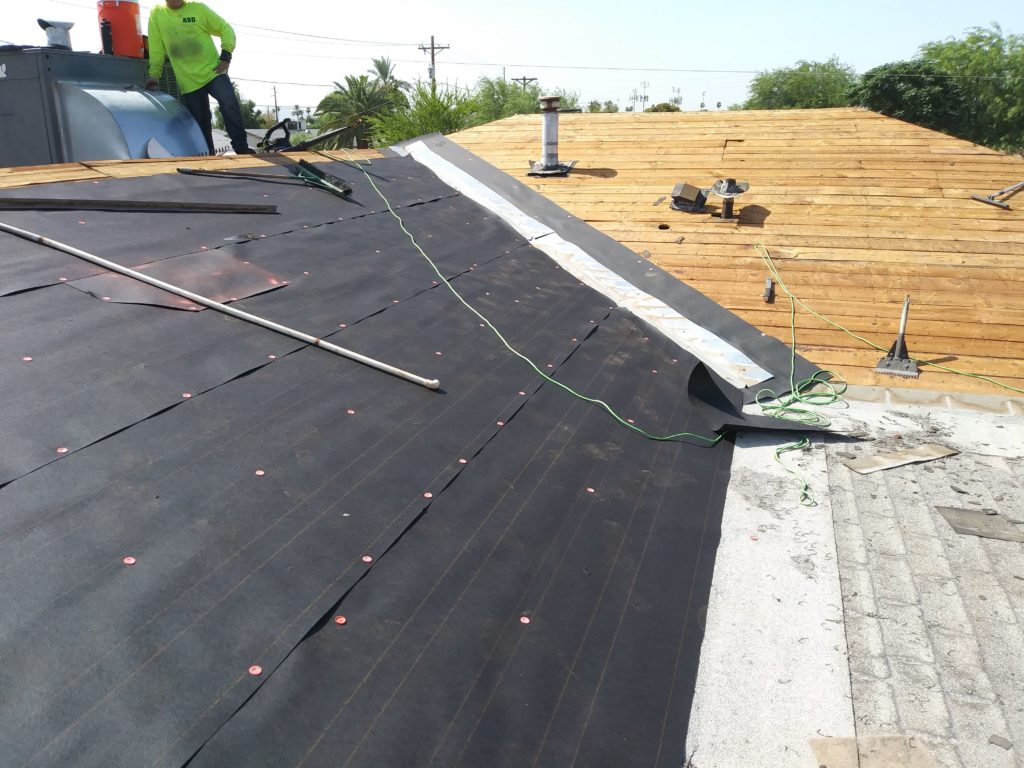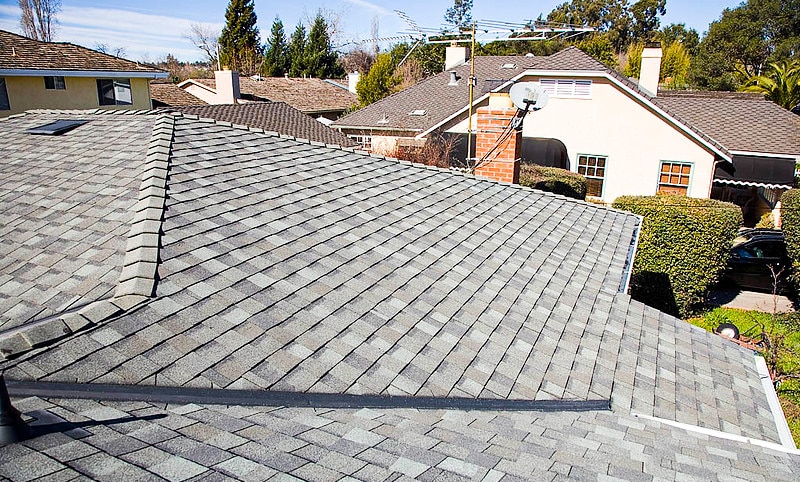Shingles are a critical aspect of any home. They provide protection from the elements and can significantly increase the value of your property.
However, over time shingles will naturally deteriorate due to exposure to weather conditions such as wind, rain, snow and ice. Therefore, it is important for homeowners to consider when they should replace their home’s shingles in order to maintain its structural integrity and protect their investment.
This article seeks to answer that question by providing an overview of what factors need to be taken into consideration when deciding when to replace one’s shingles. It also provides advice on how best to go about replacing them in order to maximize cost efficiency while ensuring long-term durability.
Through this information, readers will gain insight into how they can ensure their homes remain safe and secure for years to come.
Signs Of Shingle Deterioration
Shingles are a key component of any home’s roofing system. It is therefore essential that they be in good condition and replaced when necessary.
Signs of deterioration can include warping, curling, or missing tabs; exposed nail heads; large amounts of granular loss on the surface; and shingle cracking due to age and weathering. If these signs are present, it may be time to consider replacing your home’s shingles.
In addition to visual inspection, homeowners should also check their attic for signs of moisture intrusion such as water stains or mold growth which could indicate that the shingles have reached the end of their life cycle.
Roofers will sometimes suggest removing a few sections of the existing shingle layers for further assessment if needed before deciding whether replacement is required.

Ultimately, protecting your home from damage caused by an aging roof is paramount so investing in quality materials and professional installation services can help ensure long-term protection against inclement weather conditions.
Effects Of Weather On Shingles
It is important to recognize the signs of shingle deterioration when considering replacing your home’s shingles. However, weather conditions also play a pivotal role in the condition of your roof and its ability to protect your house from outside elements.
High winds can cause serious damage to poorly maintained roofs as they are able to lift up loose or missing shingles that have been compromised by age or poor installation.
Hail can puncture holes into asphalt shingles causing them to break down over time, leading to water leakage and other structural issues.
Additionally, extreme temperatures such as those seen during summer months can dry out asphalt shingles causing them to become brittle and crack more easily than usual.
It is essential for homeowners living in areas with heavy rain, snow, hail and high wind speeds take extra precautions against potential damage caused by these environmental factors.
Regular inspections should be conducted on roofs at least twice a year; once in the spring before storm season begins and again after winter ends.
Quality Of Shingles
Shingles are an integral part of a roof’s exterior, providing critical protection against the elements. To ensure that your home is properly defended from rain, snow, wind and sun damage it is important to pay attention to the condition of shingles.
Replacing old or damaged shingles should be done promptly when signs of deterioration appear in order to prevent any further harm to the structure.
Signs that indicate a need for replacement can include missing granules on asphalt shingle surfaces, curling edges, buckling and cracking over time due to age or weather exposure.
It is also necessary to inspect around flashings such as chimneys and skylights for possible leakage which could suggest broken or worn down seals on these areas. If any of these indicators are present then replacing your home’s shingles may be necessary.
Age Of Shingles
The age of a home’s shingles is an important factor to consider when deciding whether or not they should be replaced.
Over time, the exposure to extreme weather conditions can cause damage to asphalt shingle roofs.
In addition, sunlight and ultraviolet (UV) radiation from the sun can degrade roof coverings as well.
These external factors combined with normal wear-and-tear resulting from foot traffic on the roof will affect the life expectancy of any roof covering material.
It is recommended that homeowners inspect their roof every year for signs of aging such as cracking, curling edges, missing granules, exposed nail heads and other visible defects.
If any of these issues are present after initial inspection, it may be necessary to replace the entire roof in order to prevent further deterioration and costly repairs down the road.
Additionally, if a homeowner has had their existing shingles for more than 20 years then it might be advisable to have them inspected by a certified professional who can provide an accurate assessment regarding their condition and recommend appropriate replacement options if needed.
Cost Of Replacing Shingles
Replacing shingles on a home can be an expensive and time-consuming process. Homeowners should consider replacing their shingles when they are old, cracked, warped or missing, as these signs indicate that the roof system has reached the end of its life cycle and is no longer providing adequate protection for your house.
Furthermore, if there is significant damage to the granules surrounding the shingle itself due to weather conditions such as wind or hail, it is likely that you need new shingles. It’s also important to replace any damaged flashing around skylights, chimneys and other areas where water may enter your home.
In addition to assessing the condition of existing shingles, homeowners must evaluate how well their current roof system performs in terms of energy efficiency. A poorly insulated attic could lead to increased heating and cooling costs; thus installing more efficient insulation material along with replacing aging shingles can help reduce long-term energy bills significantly.
Ultimately, deciding whether or not it’s time for a replacement depends on the age and condition of the homeowner’s existing roof system.
Benefits Of Replacing Shingles
Replacing your home’s shingles can be an expensive and time consuming process, but the benefits are well worth it.
Replacing old or damaged shingles is essential to protecting your roof from further damage due to weather, pests and other outside forces.
Not only does replacing shingles help prevent future damage, it also increases the value of your home by improving its aesthetic appeal.
Beyond just increasing curb appeal, new shingles also offer better protection against extreme temperatures and potential ice damming in colder climates.
Newer, high-quality asphalt shingle systems are designed with advanced materials that reflect heat away from the roof while acting as a barrier against water infiltration.
These features not only provide enhanced protection for both you and your property, but they also make them more energy efficient which can lead to lower energy bills over time.

Best Practices For Replacing Shingles
Replacing shingles on your home is a complex decision that should be well-researched and carefully considered.
Annually inspecting the condition of your roof’s shingles can help identify signs of aging or damage, such as curling, loss of granules, cracking, missing pieces, and discoloration.
It may also be helpful to have an experienced professional inspect the roof regularly for any potential issues that could lead to water infiltration into the home.
If it appears that replacing the shingles is necessary due to age or wear and tear, certain steps should be taken in order to ensure proper installation.
Doing research ahead of time to find out what type of materials are best suited for the climate you live in can make all the difference in how long they will last before needing replacement again.
Additionally, hiring a qualified contractor with experience installing roofs will guarantee that the job is done correctly with minimal disruption to your daily routine.
Conclusion
It is important to consider replacing a home’s shingles when the condition of the existing shingles begins to deteriorate due to weather conditions or lack of quality.
The age and cost of replacement should also be taken into consideration, as older and cheaper materials may not last as long as newer ones.
Replacing shingles can have numerous benefits such as improved energy efficiency and increased curb appeal.
Following best practices for installation will ensure that any new material lasts longer and looks better in the long run.
Homeowners must weigh all factors before deciding whether or not it is time to replace their home’s shingles.


